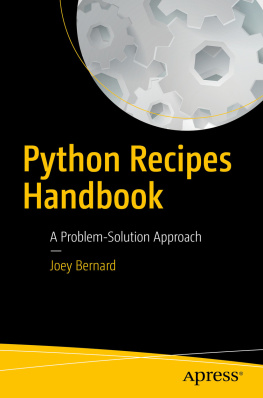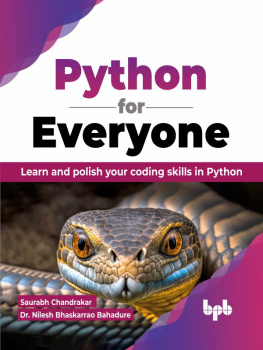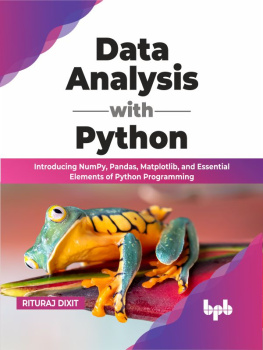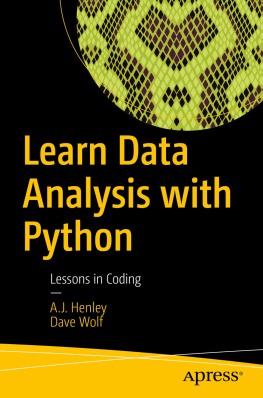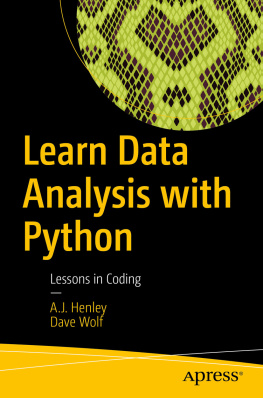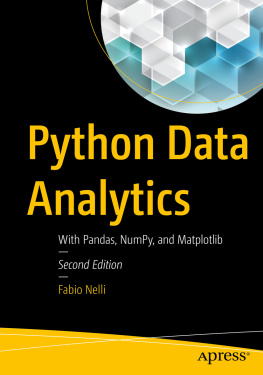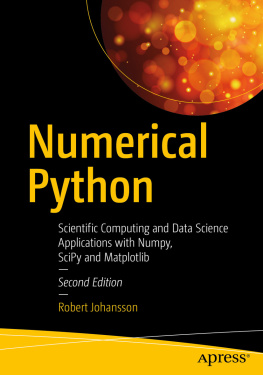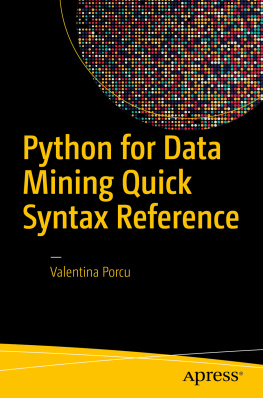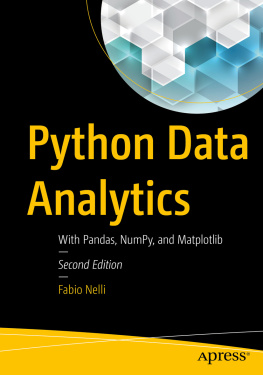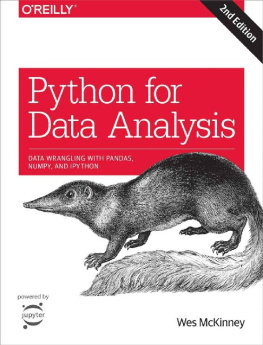Joey Bernard - Python Recipes Handbook: A Problem-Solution Approach
Here you can read online Joey Bernard - Python Recipes Handbook: A Problem-Solution Approach full text of the book (entire story) in english for free. Download pdf and epub, get meaning, cover and reviews about this ebook. year: 2016, publisher: Apress, genre: Computer. Description of the work, (preface) as well as reviews are available. Best literature library LitArk.com created for fans of good reading and offers a wide selection of genres:
Romance novel
Science fiction
Adventure
Detective
Science
History
Home and family
Prose
Art
Politics
Computer
Non-fiction
Religion
Business
Children
Humor
Choose a favorite category and find really read worthwhile books. Enjoy immersion in the world of imagination, feel the emotions of the characters or learn something new for yourself, make an fascinating discovery.
- Book:Python Recipes Handbook: A Problem-Solution Approach
- Author:
- Publisher:Apress
- Genre:
- Year:2016
- Rating:5 / 5
- Favourites:Add to favourites
- Your mark:
Python Recipes Handbook: A Problem-Solution Approach: summary, description and annotation
We offer to read an annotation, description, summary or preface (depends on what the author of the book "Python Recipes Handbook: A Problem-Solution Approach" wrote himself). If you haven't found the necessary information about the book — write in the comments, we will try to find it.
Learn the code to write algorithms, numerical computations, data analysis and much more using the Python language: look up and re-use the recipes for your own Python coding. This book is your handy code cookbook reference. Whether youre a maker, game developer, cloud computing programmer and more, this is a must-have reference for your library.
Python RecipesHandbook gives you the most common and contemporary code snippets, using pandas (Python Data Analysis Library), NumPy, and other numerical Python packages.
What Youll Learn
- Code with the pandas (Python Data Analysis Library)
- Work with the various Python algorithms useful for todays big data analytics and cloud applications
- Use NumPy and other numerical Python packages and code for doing various kinds of analysis
- Discover Pythons new popular modules, packages, extensions and templates library
Who This Book Is For
This handy reference is for those with some experience with Python.
Joey Bernard: author's other books
Who wrote Python Recipes Handbook: A Problem-Solution Approach? Find out the surname, the name of the author of the book and a list of all author's works by series.

